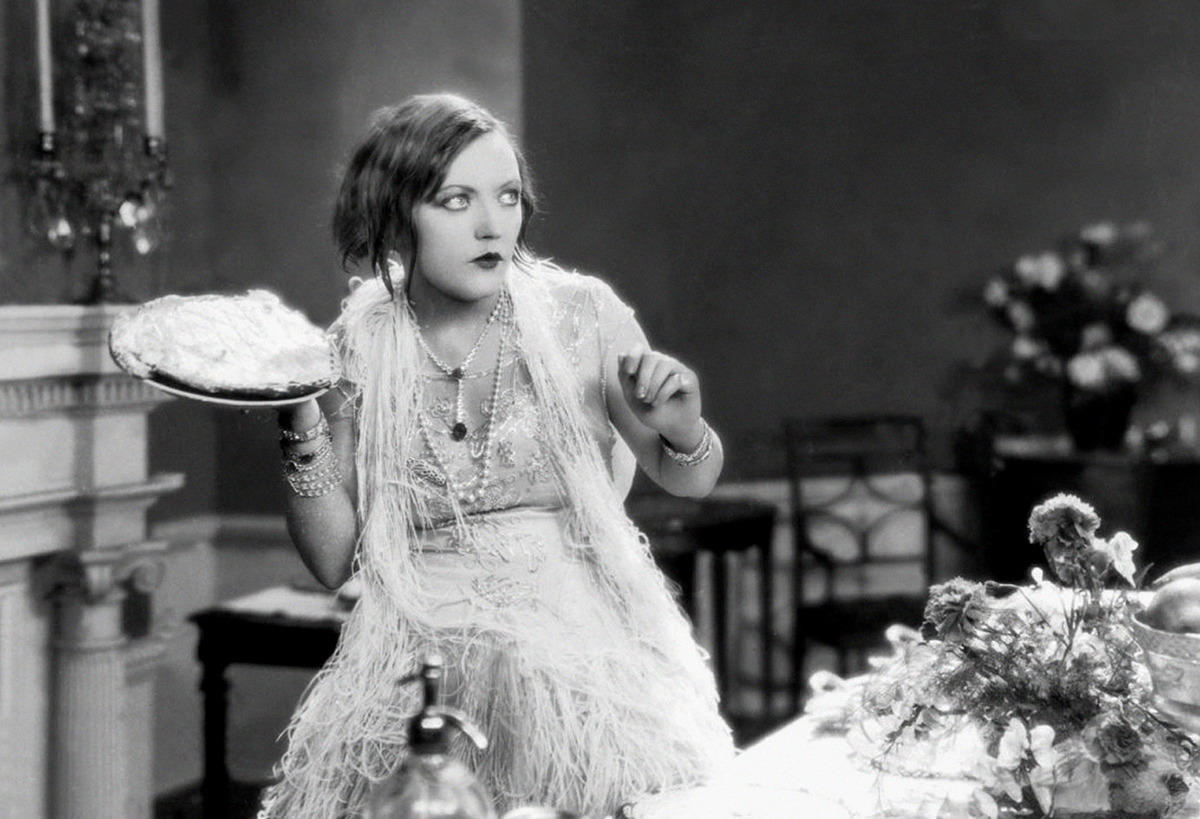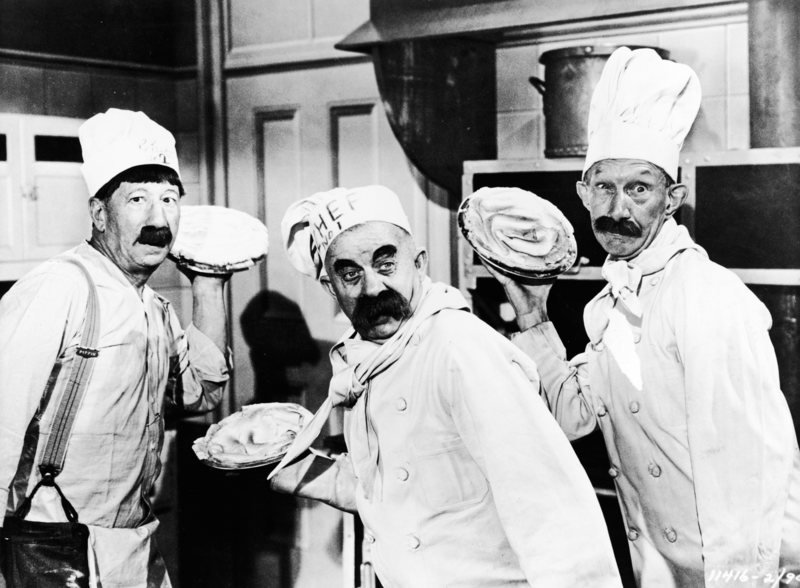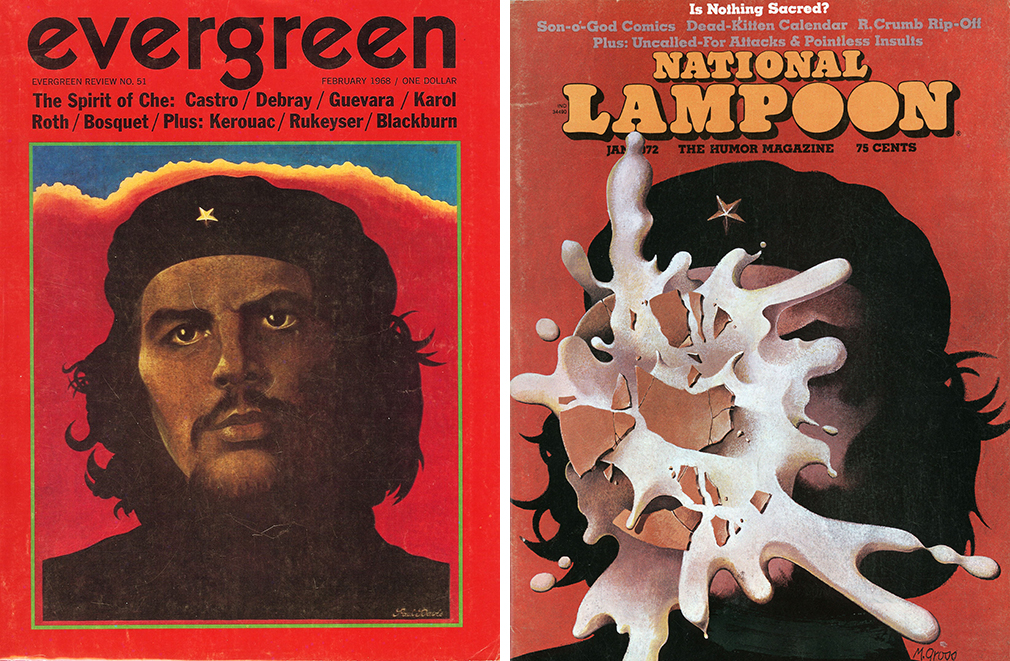
“Pi the type” is an old printer’s and typesetter’s term that signifies the presumed accidental dropping of a locked-up chase or “forme” of metal type, thus smashing and scattering all the typeset characters into an unsalvageable mess. But the story you are about to read is not about “pied” type. Instead, today, I offer an homage to another type of pie!
It is the pie that that came to America with the first English settlers — meaty loaves baked in long narrow pans called “coffins” that over time evolved into the crust-lined fruit-filled and cream-topped confections that us pie-lovers love to love. In the late 19th century such pie was integral to the slapstick comic practice of throwing custard and crème pies at another person solely for its mindlessly hilarious entertainment value. Conceived by unsung gag men and performed by America’s itinerant vaudevillians, in addition to slipping on a banana peel, uproarious pie fights are among the most famous comedy routines of all time. The classic pie fracas, the main course of whack-a-doodle silent film comedy, is so sidesplittingly funny (notably when it happens to others) that seeing a well-choreographed or serendipitously anarchic pie fight cannot but make you plotz.
And who among us could not, would not and should not benefit from a healthy, hearty plotz to get through these uncertain days of anxiety?
The preeminent playwright Anton Chekhov noted that in theater, if a gun appears in the first act, it will inevitably go off in the second or third. Similarly, in comedy if a pie appears anywhere on a set, it will inevitably be thrown ... at someone. Pie = pie fight. Philosopher Henri Bergson argues in 1900 that laughter was based on the mechanical and automatic aspects of movement. Pie + pie fight = uncontrollable joy.

So, what does a thrown pie have to do with Design Observer and observing design? Well, nothing and everything. In the comedy “space,” pie-brawls require a certain level of design thinking to be effective. You just don’t throw a pie you artfully aim a pie — designing its trajectory and anticipating its outcome. What is a better way to relieve the stress of life lived than watching someone get a cream pie-in-the-puss?
History has not divulged the name of the first person to throw a custard pie (maybe to protect his or her ancestors from retribution or ridicule). It is, however, likely that some bigshot comedy producer, like Mack Sennett, known as the “custard pie king,” raised the level of pie throwing to an art form. Sennett’s idea to have characters hurl frothy baked goods at each other allegedly originated from an on-set incident in 1913 involving actress Mabel Normand, who expressed annoyance at comic co-star Ben Turpin by hurling a custard pie in his face (though, as Turpin also had pie in shoved in his face in the 1909 Broncho Billy Anderson short “Mr. Flip,” some believe the story is a conflation). Sennett first took his bow for the pie gag in the film A Noise From the Deep (1913), in which Normand, playing a farmgirl, threw a pie into the kisser of obese farmhand Roscoe “Fatty” Arbuckle. Also, in 1913’s “That Ragtime Band,” pie humor established itself as a conceit and has been a comedy staple ever since, with everyone from the Three Stooges to Laurel and Hardy and hundreds of comic prior and since.
In July 2015, The New York Times reported that the long-lost second reel of Laurel and Hardy’s The Battle of the Century had been discovered, and with it, the biggest pie fight in movie history. Now, this was news! For decades, film historians had searched for the film’s ending, which included a pie fight that contained over 3,000 baked goods. This reel is, asserts film critic Leonard Maltin, “the holy grail of comedy.”

Historically speaking, the first acknowledged pie fight appeared in the aforementioned 1909 Mr. Flip, in which an obnoxious general store manager gets his comeuppance with a pie to the face. No one will, or should, remember this flop, but movie makers of the time were inspired by the pie throwing scene—a visual gag well suited to the soundless pantomime. Almost instantly, the pie fight became a staple of silent films. Thrown pies also make for some great illustrations, like Michael Gross’ cover of the National Lampoon, which parodied the famous Paul Davis Che Guevara cover of Evergreen Review. Here the thrown pie challenges an icon’s status. Think of the world’s heroes and villains with a face full of pie. I like a pie that makes a statement.
Back to movies. By the time sound films came along in the 1930s, the pie fight was standard fare — it was almost a requirement that comedy groups include at least one such scene in each film.
Great pie fights and fighters are made not born and to prove this, courses at comic colleges, like Clown Antics, have established rules that pie throwers should abide so that the practice does not descend into anarchy. If during this Covid-19 lockdown you opt to begin pie throwing, if only to let off pent up steam, be sure to follow this rule:
Throwing a pie is not always the easiest and may not give the desired effect. However, with practice, one can launch a pie a few feet accurately giving the audience the crème de le crème of the pie throwing art.
